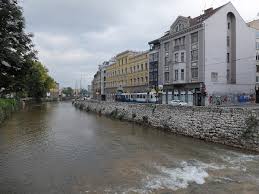
Introduction
Sarajevo, the capital city of Bosnia and Herzegovina, is renowned for its unique blend of Eastern and Western cultural influences. With a rich history shaped by the Ottoman Empire, Austro-Hungarian rule, and a poignant recent past, Sarajevo stands as a testament to resilience and unity. As a major center for culture, arts, and religion, the city draws visitors from all over the globe, making it increasingly relevant in discussions about cultural heritage and post-conflict recovery.
Historical Significance
The history of Sarajevo dates back to the Roman era, but it was during the 15th century under Ottoman rule that the city flourished as a pivotal trade route between Europe and the East. Among its notable landmarks are the Baščaršija bazaar, Gazi Husrev-beg Mosque, and the Latin Bridge, where Archduke Franz Ferdinand was assassinated in 1914, igniting World War I.
In the 20th century, during the breakup of Yugoslavia, Sarajevo became a focal point during the Bosnian War (1992-1995). The city endured a devastating siege, leading to significant loss and destruction but also fostering a strong sense of community and resilience among its residents.
Modern Sarajevo
Today, Sarajevo is a city that embraces its complex past while looking toward the future. It is characterized by its vibrant cultural scene, including music festivals, film festivals, and art exhibitions that attract local and international artists. The Sarajevo Film Festival, which began in 1995 as an act of defiance against war, has grown into one of the leading film festivals in Southeast Europe.
Sarajevo is also recognized for its diverse religious landscape, where mosques, churches, and synagogues coexist harmoniously, symbolizing the city’s commitment to tolerance and interfaith dialogue. Notable sites include the sacred Franciscan Church of St. Anthony and the beautiful Cathedral of Jesus’ Heart, alongside numerous historic mosques.
Conclusion
In conclusion, Sarajevo is a city that holds immense significance both historically and culturally. Its unique fusion of traditions, its ability to rebuild after hardship, and its role as a cultural beacon in the region make it an essential destination for anyone interested in experiencing the depths of human resilience and diversity. Moving forward, Sarajevo’s growth as a cultural and tourist hub reflects not only the city’s recovery but also a hopeful outlook towards its future, making it a crucial point of interest for global travelers and scholars alike.

